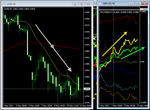rodolfo49
Newbie
- Messages
- 9
- Likes
- 2
I just heard a guy(while analyzing some charts) say "concerning risk ON risk OFF charts..." and the other day I asked a friend what was his trading strategy and amongst using some indicators, he also mentioned checking the "risk ON risk OFF".
Can someone please explain this in a simple way? :whistling
Can someone please explain this in a simple way? :whistling


